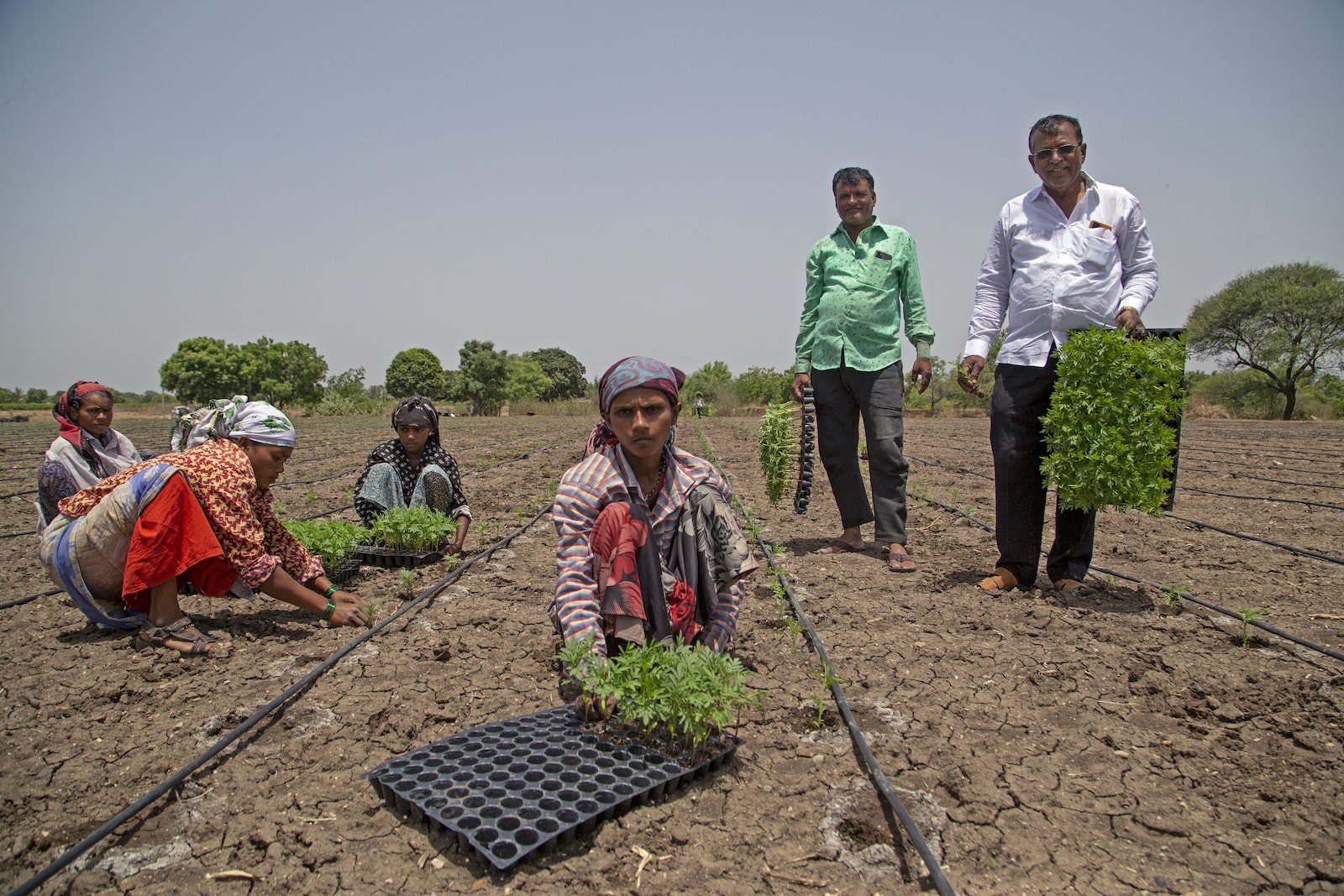This story was produced in collaboration with the Food & Environment Reporting Network, a nonprofit journalism organization.
This story is part of the Grist series Parched, an in-depth look at how climate change-fueled drought is reshaping communities, economies, and ecosystems.
As a young boy in the 1970s, Vishwanath Thange knew hunger. He usually lived on one meal a day, not enough when you’re working construction. But Thange had to take the work — or starve. He was born in Hiware Bazar, a village tucked deep inside the western Indian state of Maharashtra. Back then, the hamlet was a crime-ridden backwater, desperately poor and largely abandoned by government agencies. Thange’s family owned seven acres, but chronic drought prevented them from growing food to eat or sell. So Thange left, when he was 15, to look for work in nearby cities. About 20 years ago, he returned to Hiware Bazar, and today he is one of the 89 farmers there who have assets worth more than a million Indian rupees — a fortune in a country where 90 percent of the population makes less than 300,000 rupees a year. In the past 25 years, every farmer in Hiware Bazar has prospered, says Thange. “Today,” he says, “not a single person goes to bed hungry.”
Thange recently earned around 2 million rupees from his farm, the equivalent of a bit more than $25,000. The average agricultural household in India, meanwhile, earns the equivalent of $800 as farm income annually. Thange’s income has paid for a good education for his two sons — a significant feat in rural India, where virtually no one can afford education. It also meant a sturdy, comfortable home for his family, and an increase in his land holdings, from seven acres to 25 acres. The average size of a farm in India is just 2.6 acres.
Although Thange’s story is not an exception in Hiware Bazar, it is exceptional for India. Sixty-five percent of the country’s population resides in villages, where farming is the principal occupation. Farming, however, has been unprofitable in recent decades due to drought, a lack of direct integration with markets, high input costs, and low market prices.
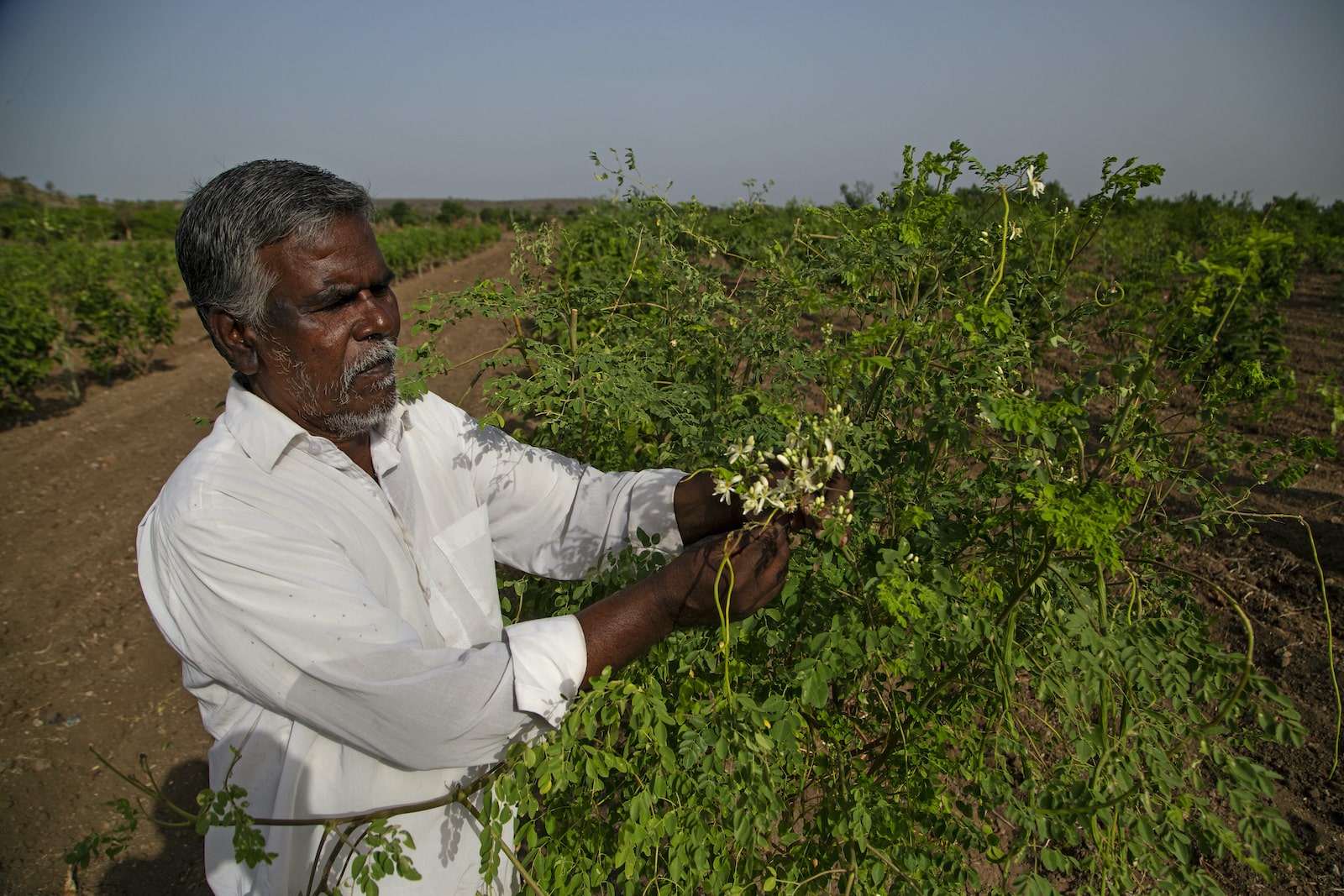
Vishwanath Thange holds a flower while standing in an irrigated field in Hiware Bazar. Chirodeep Chaudhuri
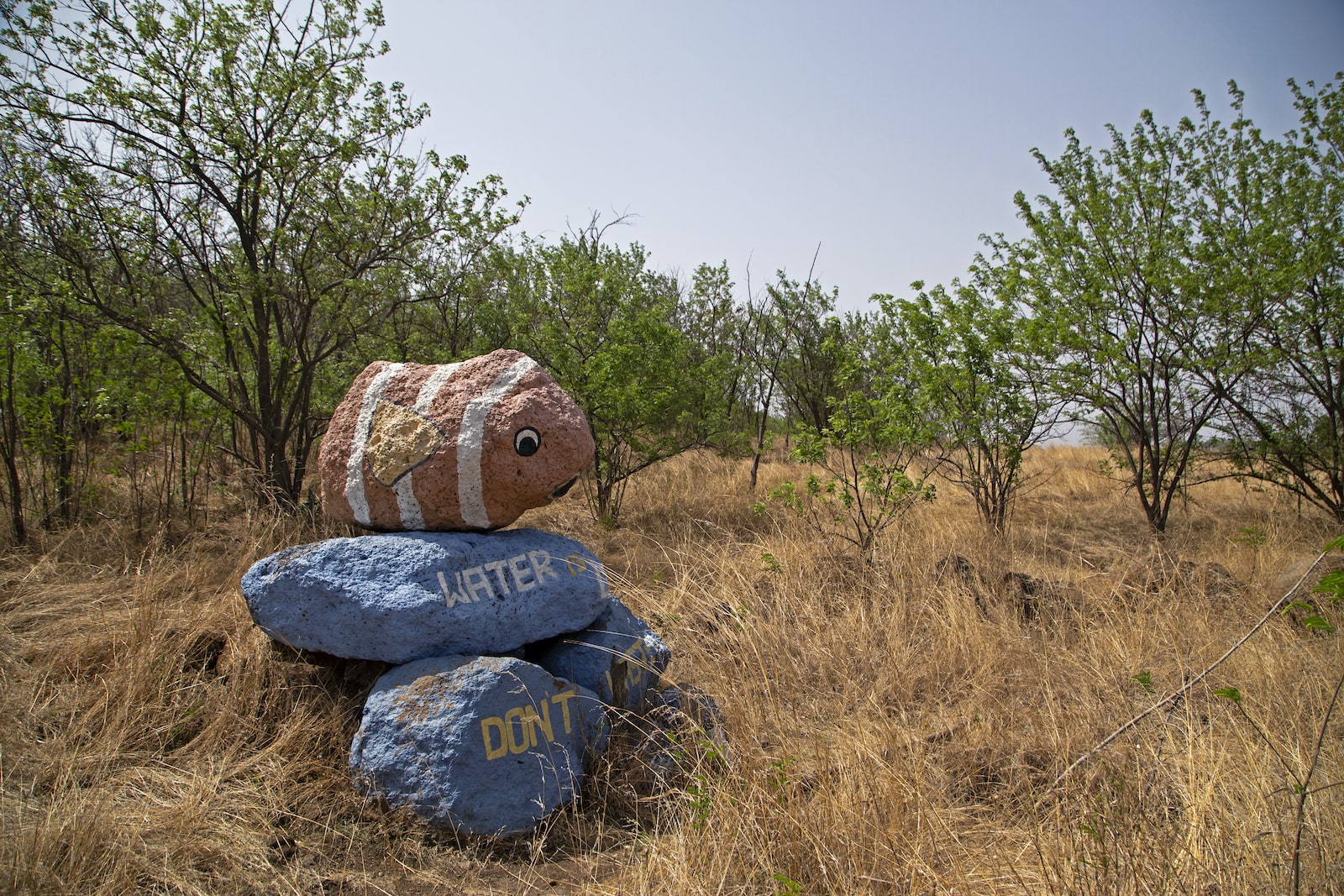
A motorcycle and car drive by the sign for Hiware Bazar, left. Right, painted rocks sit in a village field. Chirodeep Chaudhuri
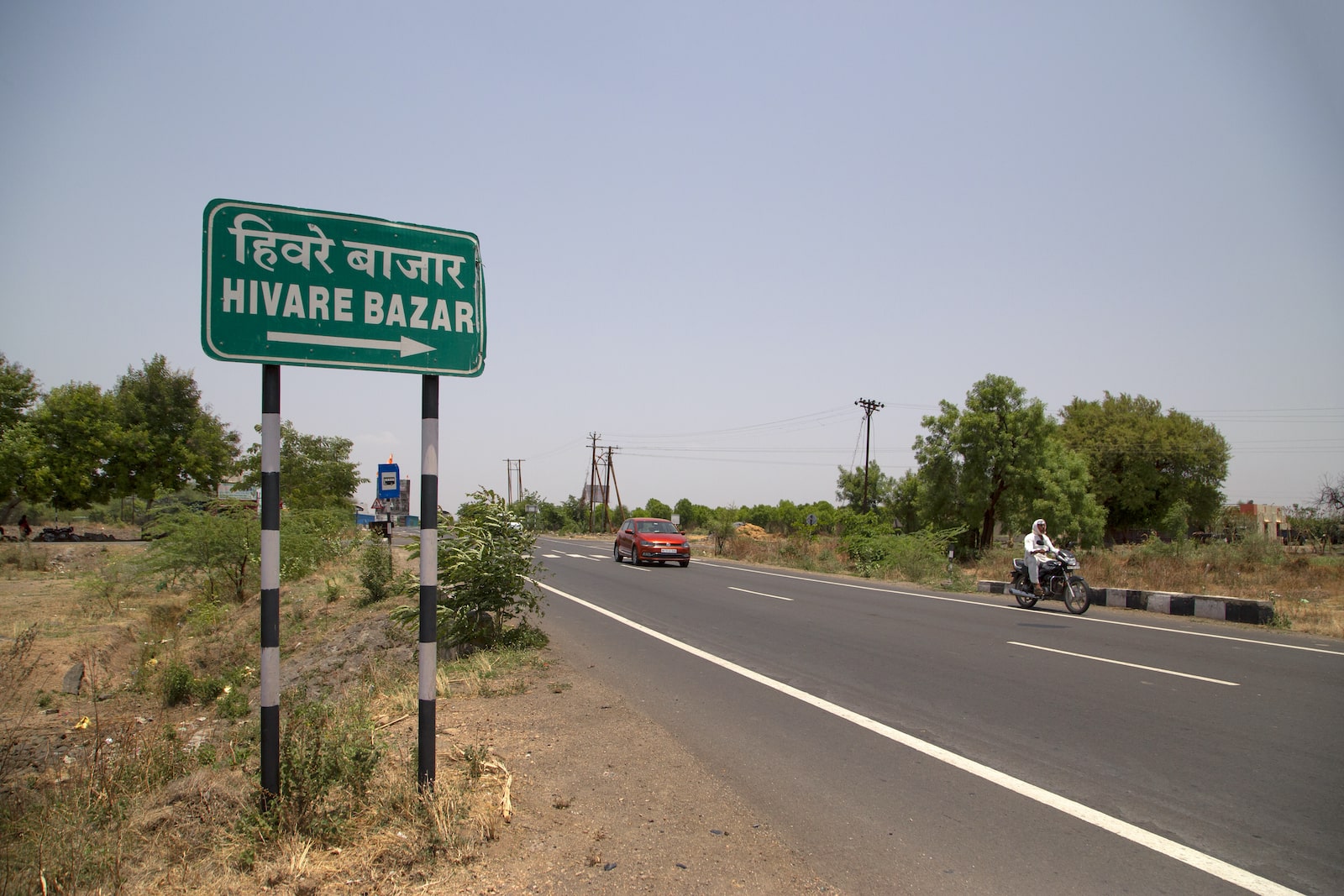
The failure of the agriculture sector is blamed for the epidemic of farmer suicides in the country, which claimed the lives of more than 300,000 people between 1995 and 2014. According to the latest government figures, more than one agricultural worker dies by suicide every hour in the country. Maharashtra, the state where Hiware Bazar is located, reports the highest number of such suicides in the country. Last year, Maharashtra recorded more than 4000 farmer suicides, or over 11 each day.
Climate change has exacerbated India’s agrarian crisis. Last year, the country lost more than 12 million acres of cropland to extreme weather. As droughts worsen, the resurrection of Hiware Bazar holds lessons for villages across the country.
Popularly known as the “village of millionaires,” Hiware Bazar’s model is now being replicated in thousands of villages across India. Through effective watershed management, the rebuilding of natural resources, and a shift to more sustainable, less water-intensive crops — all of which hinged on the participation of residents — the village turned itself into a national “model of development.” The agricultural success has driven progress across the rest of the community, including in healthcare and education.
But Hiware Bazar’s salvation took years of hard work. No one knows this better than Popatrao Pawar, the sarpanch, or head of the village, who spearheaded the village’s transformation. “When we started, it seemed impossible,” he says. “For us, it’s paradise regained.”
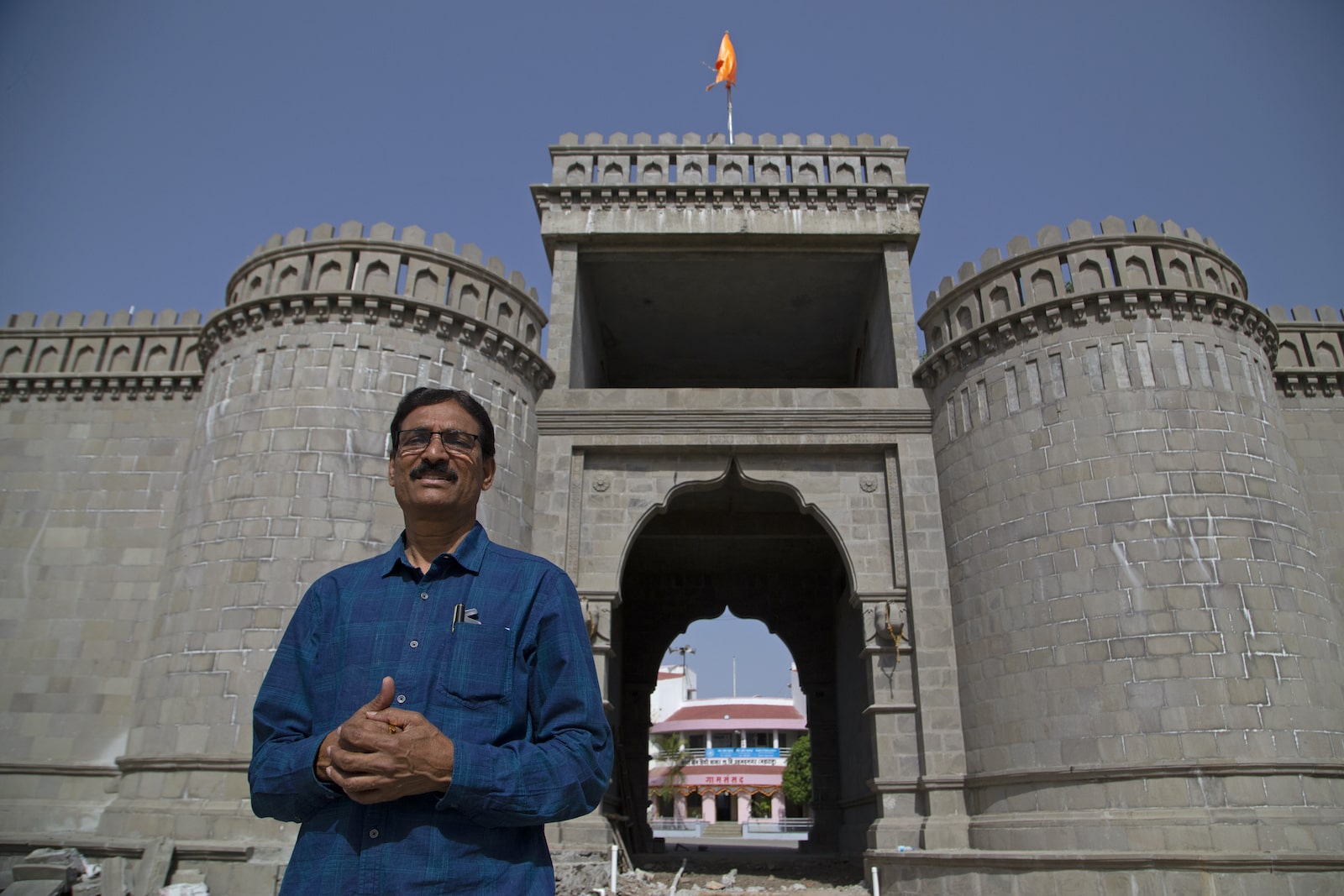
Hiware Bazar lies in the drought-prone Ahmednagar district of Maharashtra, and according to the most recent government data, receives less than half of the national average of rainfall each year. Agriculture there was largely rain-fed, but villagers had traditionally produced enough to feed themselves. Every home had cattle or goats, and dairy production was the primary source of income. But in the decade starting in 1972, the village faced three severe droughts, rendering the land barren, or banjar in local parlance. Wells went dry, fodder to feed livestock disappeared, and villagers turned to the forests on surrounding hills, stripping away the trees for firewood to produce liquor, both for sale and to ease the pain as their livelihoods collapsed.
By the 1980s, Hiware Bazar had lost most of its natural assets. Only a fraction of the land could be cultivated, the soil was exhausted, and there was no electricity. At first, people left the village, thinking it would be temporary. Eventually, they just stayed away. Those who remained worked on farms or at construction sites in nearby villages for low wages.
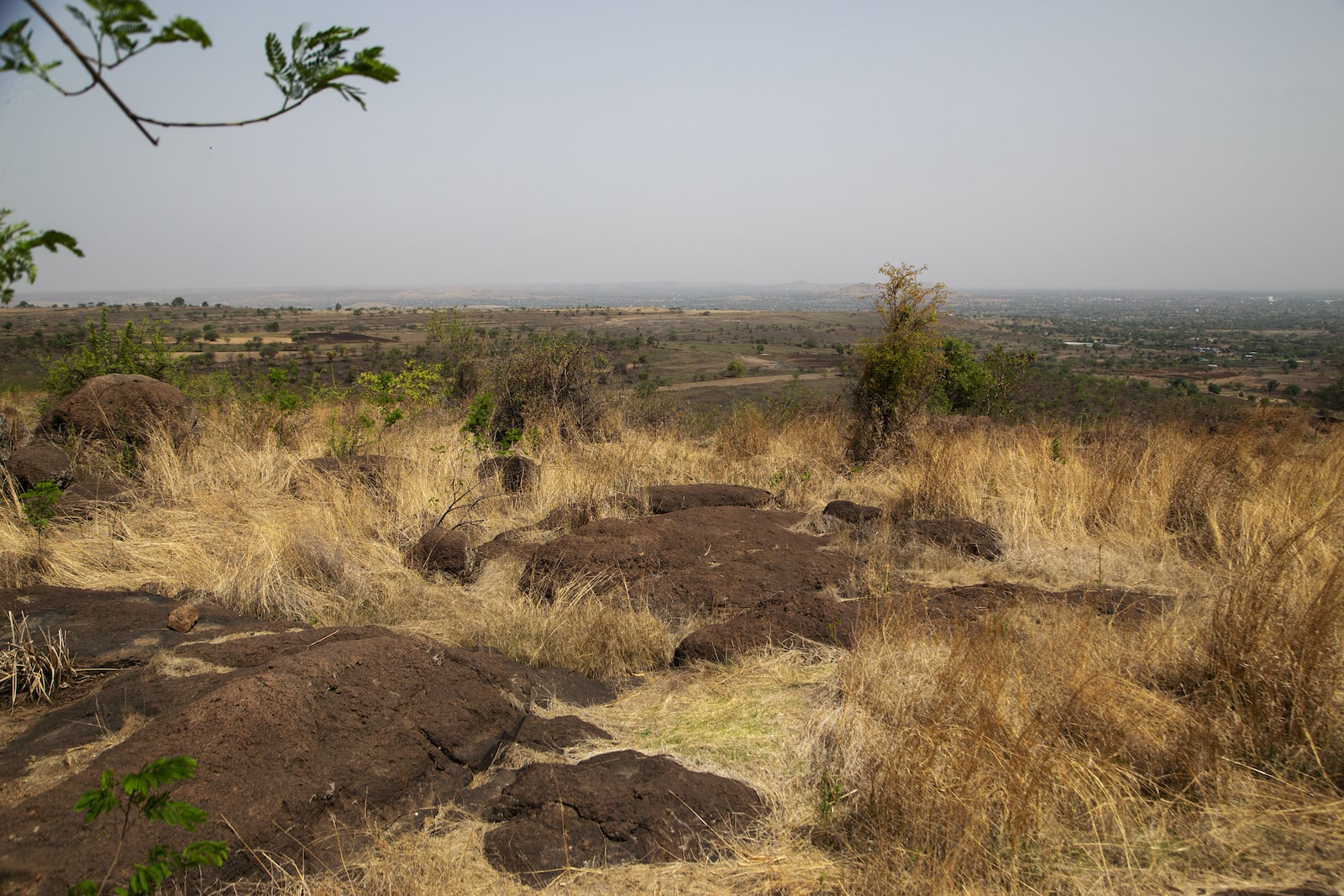
“When contractors came looking for workers in Hiware Bazar, villagers would fight for the jobs, beat each other up,” says Arjun Pawar, who was the head of the village between 1972 and 1977.
According to Arjun, alcohol production and sale became the primary source of income. Locals mixed black jaggery, a coarse sugar made from sugarcane juice, with ammonium chloride powder and rotten fruit, like orange and sweet lime, to produce a potent brand of desi daru, Hindi for “country liquor.” An increase in crime followed. Villagers would also assault government officers, such as the forestry officials who prohibited cattle grazing on what remained of the forested hills surrounding Hiware Bazar.
“People would tie up the forest officials to trees, and soon our village became a ‘punishment posting,’ where government policemen, teachers, and health officials were posted only if they had to be punished,” says Arjun.
Men got drunk in the local school’s empty classrooms, recollects Deepak Thange, who was a student in the 1980s. At the time, every child in his village, including him, dreamed of growing up and building a future far from the village.
“There was no hope for Hiware Bazar,” he says. “There was no hope for any of us.”
When Habib Sayyed, a 48-year-old farmer, was a child, he would spend most Saturdays during the monsoons gathering cow dung. He and other children in the village would use the dung to patch the school’s mud floor. Before lessons resumed on Monday, the dung would dry, holding the floor together until the following weekend, when it would have again turned to muck from rain seeping in from the ceiling.
The school was a small, dilapidated structure with a tin ceiling and two rooms that ran only through fourth grade. Today, a new school, Yashwant Vidyalaya, sits at the village entrance, a prominent symbol of Hiware Bazar’s progress. It was revamped in the early ‘90s after Popatrao Pawar, the village head, convinced 18 families to donate parts of their land for its construction. The new school was the first glimmer of hope in the village, says Subhash Thange, who as a young man donated his labor to help rebuild the village. “It promised a better future for the children and built faith in the new administration.”
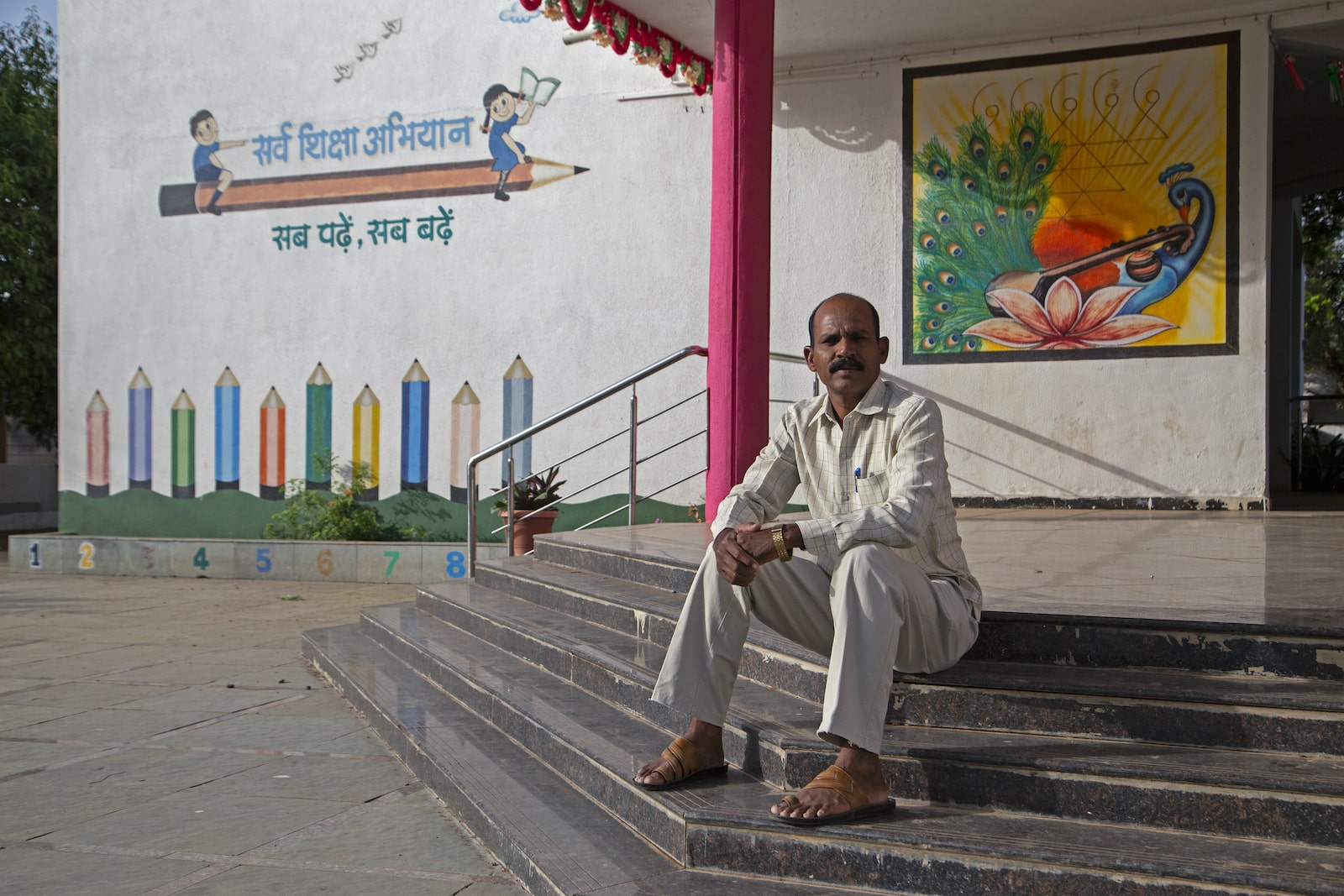
And the school has delivered. The literacy rate in Hiware Bazar is 95 percent, compared to 30 percent in 1990. “Our school runs classes up to the 10th grade, and also hosts students from neighboring villages,” Sayyed says. “During the pandemic, even as schools were shut across the country, ours continued after putting a COVID-19 prevention system in place.”
Pawar was initially skeptical about running for village sarpanch. As a boy, he had moved away after fourth grade to complete his schooling; in 1987, he earned a postgraduate degree in commerce. He was not only the most educated person in Hiware Bazar, but he also had a promising career as a professional cricket player if he chose to pursue it. His achievements had earned him the respect and admiration of other villagers.
“He had played cricket with some of the top players in the country at the time, and yet he was humble, always kind and soft-spoken,” says Sakharam Padir, a teacher and one of the first to volunteer with Hiware Bazar’s new village council. Pawar’s success story, he says, gave people hope.
In 1989, some residents asked Pawar to run for office. His family, however, advised him to abandon the village and use his education to secure a white-collar job. As he considered what to do, Pawar’s mother left the village in protest, living at her father’s place for eight days. “She was adamant that I should worry about my own future, as the village did not have one,” says Pawar.
But residents kept pleading with him to help, and Pawar says their persistence, as well as a genuine concern for the place where he grew up, eventually persuaded him to stay. In late 1989, he was unanimously elected to a five-year term as sarpanch.
One of the first things Pawar did was invite villagers to share their concerns. The conversations left him wondering how he would raise the money necessary to begin solving the many problems. The village had all but collapsed; it lacked basic amenities like water, roads, sturdy homes, medical facilities, and toilets.
“It took us four days to prepare this list and it left me overwhelmed,” says Pawar. “All I knew then was that if we were going to emerge from this situation, the entire village would have to work together.”
Together with the new village council, Pawar embraced the idea of shramdaan, or “labor donation,” as a way to get villagers invested in building a better future. He went door to door, trying to convince people to contribute. If most of the villagers were inspired by Pawar and eager to work with him, there were some who resisted. After the village council built fences around its tamarind orchards, for instance, some residents unleashed their goats inside the fences to chew up the leaves and tender branches.
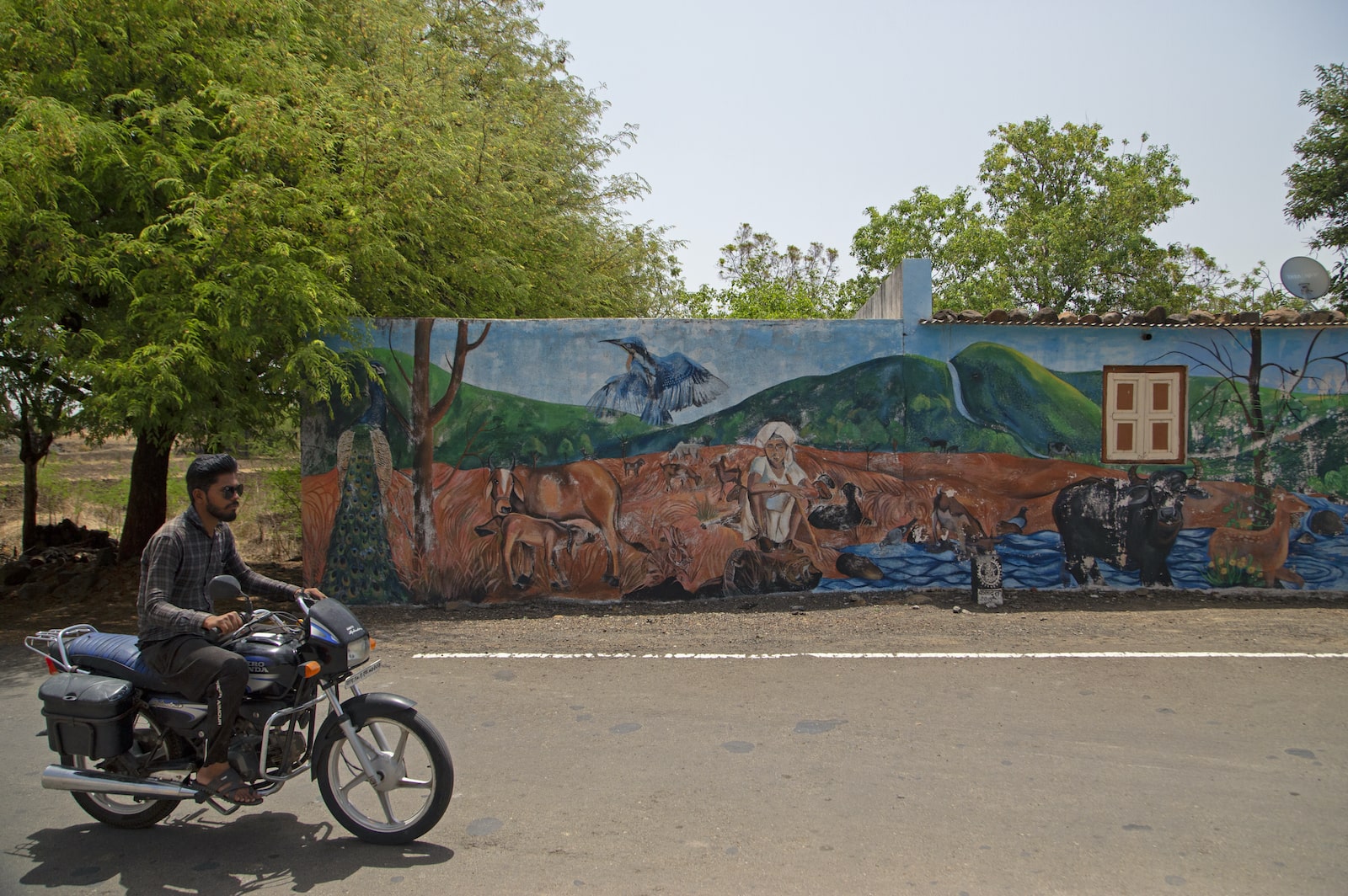
The council prepared a five-year development plan with education as the priority. Using donated land and labor, the village rebuilt the school. The council then started asking state agencies — like forestry, agriculture and animal husbandry — for help, using the school as evidence that Hiware Bazar was serious about changing its fortunes. The officials, still wary of the clashes they’d had with villagers over the years, were not easily convinced.
“I pleaded with them,” says Pawar.
His persistence eventually paid off. In 1992, the forest department added Hiware Bazar to the Joint Forest Management program. Begun in India in 1988, the national program helped forest communities develop and manage degraded forestland in ways that helped them meet their subsistence needs. Residents replanted 170 acres in the hills around the village, sowing tamarind, mango, arjun, and Indian gooseberry trees, all of which have economic and environmental as well as social and cultural value. The bark and fruit of the arjun tree, for instance, are widely used in ayurveda, the alternative medicine practice with deep roots in India. They started rituals, like gifting plants to newlyweds and organizing tree-planting campaigns for kids. They built water holes for the wildlife and replaced firewood with biogas generated from cattle dung.
Next, the villagers restored the depleted watershed. In 1994, Hiware Bazar joined the state government’s Ideal Village program. The idea was to build resiliency and sustainability by providing safe drinking water, creating jobs, and strengthening education and health care.
Watershed development was central to the program. Years of cattle grazing and clear-cutting in the hills had eroded the soil and depleted the groundwater. Now, with reforestation and a ban on cattle grazing, the soil began to improve. The tree cover slowed the rainwater runoff, holding the soil in place and allowing the water to percolate into the soil.
Villagers built small dams along the natural drainage lines on the hills to trap rainwater, increasing the groundwater and holding the excess as surface water. The same technique was used to trap rainwater within the farmers’ fields. “With the watershed infrastructure, the water table rose almost immediately and the area under irrigation increased,” says Pawar.
Farmers in Hiware Bazar had traditionally grown sorghum and pearl millet, and would often plant water-intensive crops like sugarcane and banana. They extracted groundwater for irrigation through deep wells, depleting the aquifers. Now, the village council started planning crops according to water availability, while also promoting dryland crops, like pulses, and less water-intensive crops, like vegetables. They abandoned wasteful flood irrigation in favor of micro-irrigation, which efficiently delivers water to crops through drip pipes and sprinklers.
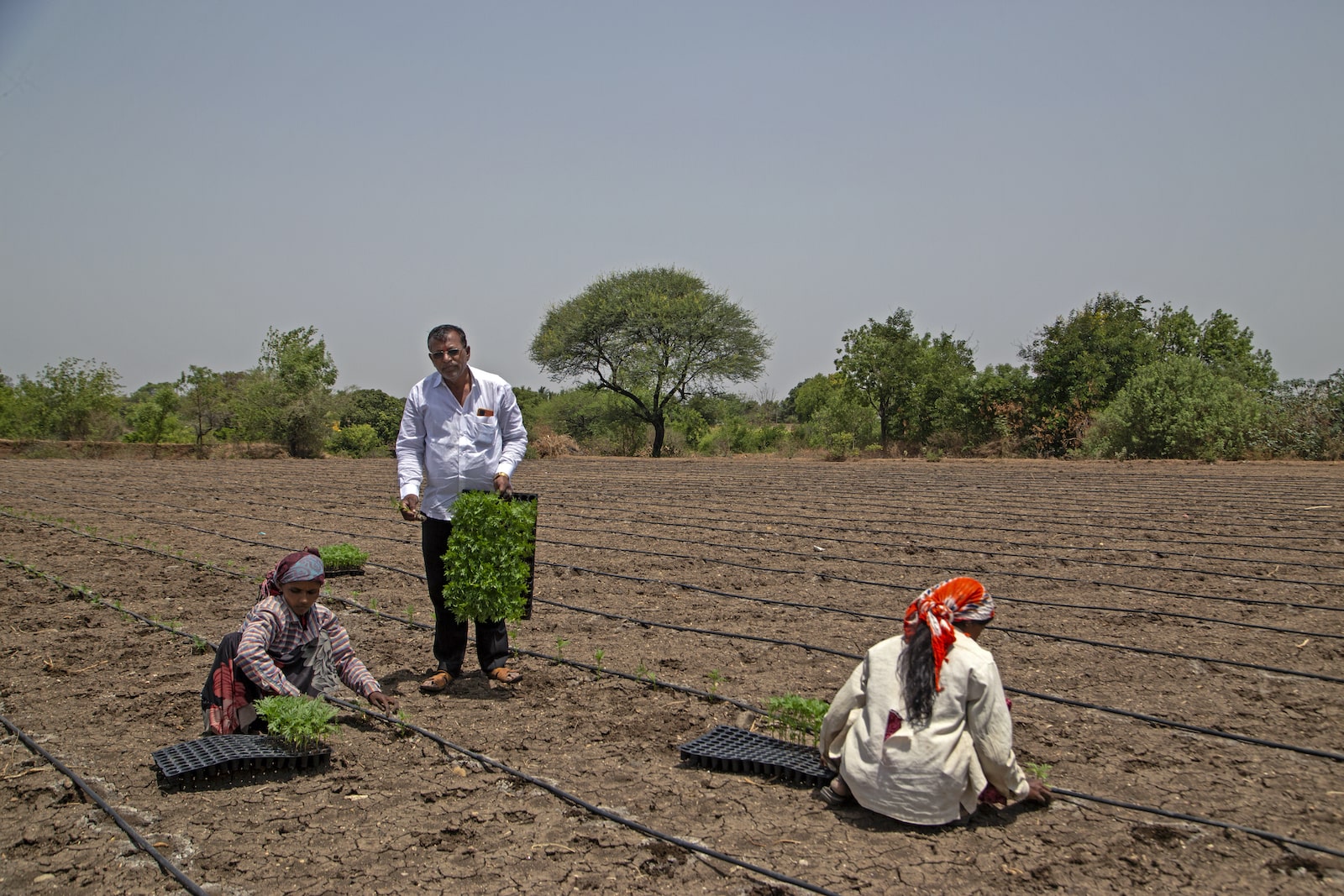
Before long, farming was working again in Hiware Bazar. By the mid-aughts, the number of trees had increased from 30,000 to 900,000. The amount of irrigated land went from 154 acres in 1994 to 642 acres in 2006. The village council helped farmers get bank loans for tractors, and secured some genetically modified seeds to boost yield, use less water, and resist pests. Farming evolved from subsistence to commercial, with villagers growing and selling wheat, oilseeds, pulses, vegetables, fruits, flowers, and fodder. Incomes rose sharply, and in 1998 the government declared Hiware Bazar to be an “ideal village.”
In the quarter century since this work began, Hiware Bazar has built on its water harvesting and watershed management initiatives. It has introduced “water budgeting,” which considers the total available water in the village from rainfall and conservation efforts, and then makes allocations for drinking, domestic use, and irrigation, while banking 30 percent each year for future use. Crops are planned according to the water budget, and villagers have continued to donate their labor to maintain the infrastructure.
A direct benefit of the village’s agricultural revolution is dairy farming, which is once again integral to Hiware Bazar’s economy. The increased income enabled many farmers to buy more cattle. In 2003, villagers constructed a veterinary clinic to ensure animal health and provide services like artificial insemination. The efforts, in turn, have increased the village’s milk production from 39 gallons a day in 1990 to more than 1,300 gallons today.

With farming revitalized, the wealth spread throughout the community. Every home is made of concrete, as opposed to just two in 1990. The village has 87 tractors, compared to none in 1990; 368 motorcycles, compared to 10 in 1990; and 28 cars, compared to none in 1990. To ensure that the village’s development benefited its poorest citizens, most of whom did not own farmland, the village council leveraged government programs to allot land to these families, and served as guarantors for their agricultural loans.
“I think what worked was that whatever plans and schemes were implemented in Hiware Bazar, villagers did not think of them as government schemes or village council schemes,” says Sakharam Padir. “They thought them to be programs for their own development, for their own family’s welfare.”
Over the past two decades, Hiware Bazar has helped thousands of villages in India replicate its development model. According to a 2019 report by the national government’s policy think tank, India is suffering from the worst water crisis in its history, with 600 million people facing significant water stress and some 200,000 dying every year due to inadequate access to safe water. Agriculture accounts for 90 percent of water usage in India, and most of the irrigated land depends on groundwater sources, which are rapidly being depleted. Hiware Bazar’s development model, with watershed management and water conservation at its core, holds substantial relevance for Indian agriculture.
Within three years of the implementation of Hiware Bazar’s model in Bhalwani, another drought-prone village in Maharashtra, the average income of the village’s farmers rose from 100,000 rupees in 2018 to 500,000 in 2021. In 2018, the village lost two farmers to suicide, but none in the years since.
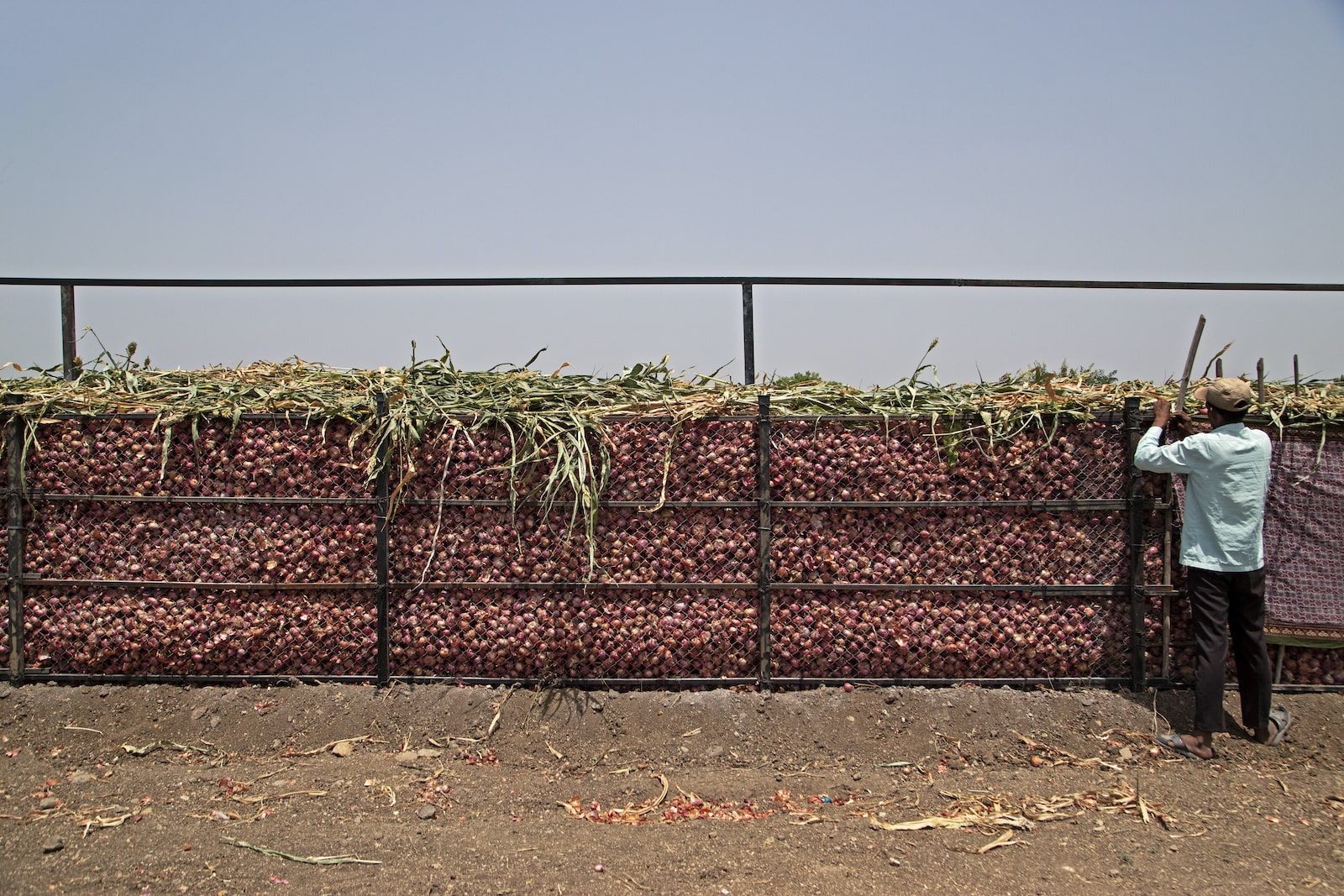
Ajay Dandekar, a professor with the School of Humanities and Social Sciences at Shiv Nadar University, calls Popatrao Pawar’s contribution to Indian agriculture “immense.” But he says India’s agrarian crisis is complex, and solving it will require fundamental changes in how agricultural commodities are priced as well as in cropping patterns, which are not in line with the rainfall patterns in the country.
“Many things can be learnt from Hiware Bazar,” says Dandekar, who in a 2017 study investigated the reasons behind farmer suicides in two of India’s hardest-hit districts. “But more importantly, along with it, the government must create macroeconomic structures within the agrarian economy that will regulate the prices and benefit farmers.”
In 2020, Pawar was awarded the Padma Shri, one of the highest civilian honors in India, for his work in Hiware Bazar. Today, he is the executive director of the Maharashtra government’s Model Village Program, working to transform a thousand of the state’s most depressed villages into self-sufficient communities. Meanwhile, activists, bureaucrats, and policymakers from across the country — as well as from countries like Germany, South Africa, Bangladesh, and others — have visited Hiware Bazar to study its success.
“In Hiware Bazar, we’ve seen every type of scarcity,” says Pawar. “We know the pain that walks in with scarcity, but we have also tasted the fruits of unity and cooperation. And now, we’re sharing our lessons with the world.”

